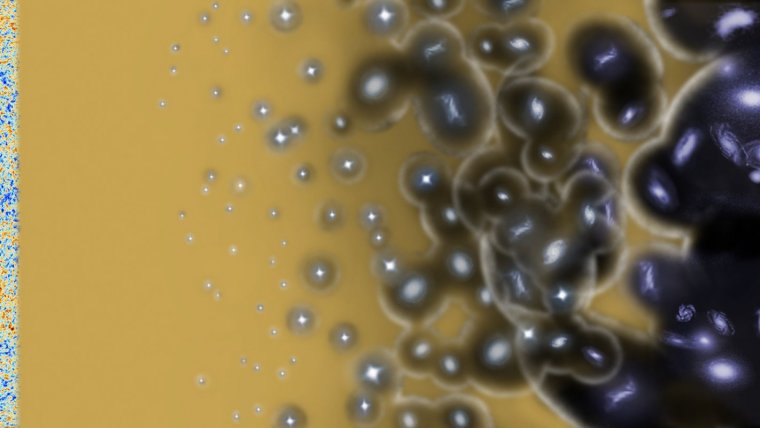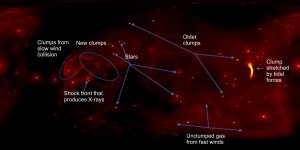| News / Science News |
First Stars Formed Later Than We Thought
NASA | SEPTEMBER 11, 2016
ESA's Planck satellite, a mission with significant participation from NASA, has revealed that the first stars in the universe started forming later than previous observations of the cosmic microwave background indicated.

This artist's impression shows a portion of the universe's history, centered on the "epoch of reionization," a process that ionized most of the material in the cosmos. From left to right: the most ancient light of the universe, the first stars, the reionization process and the first galaxies. ![]()
The background is the most ancient light in the history of the cosmos, dating back to 380,000 years after the big bang.
This new analysis also shows that these stars were the only sources needed to clear the "opaque fog" that permeated the early universe. As these first stars came to life, their light split neutral atoms apart, making the universe transparent.
Scientists refer to this as the "epoch of reionization." Planck data show this was a quick process, which was half-complete when the universe had reached an age of 700 million years.
YOU MAY ALSO LIKE




